Kaveh Kamgar
Matrix Profile XXII: Exact Discovery of Time Series Motifs under DTW
Sep 16, 2020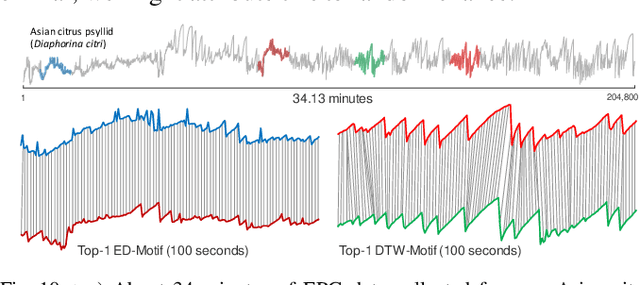
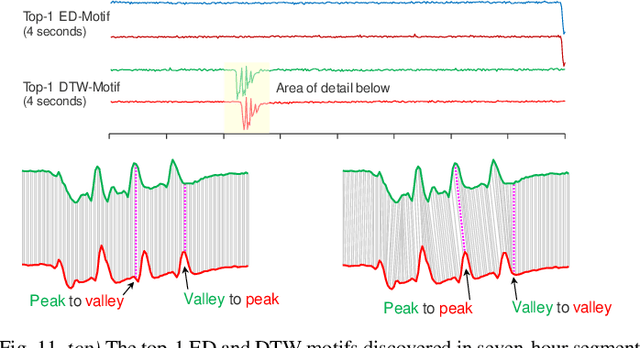


Abstract:Over the last decade, time series motif discovery has emerged as a useful primitive for many downstream analytical tasks, including clustering, classification, rule discovery, segmentation, and summarization. In parallel, there has been an increased understanding that Dynamic Time Warping (DTW) is the best time series similarity measure in a host of settings. Surprisingly however, there has been virtually no work on using DTW to discover motifs. The most obvious explanation of this is the fact that both motif discovery and the use of DTW can be computationally challenging, and the current best mechanisms to address their lethargy are mutually incompatible. In this work, we present the first scalable exact method to discover time series motifs under DTW. Our method automatically performs the best trade-off between time-to-compute and tightness-of-lower-bounds for a novel hierarchy of lower bounds representation we introduce. We show that under realistic settings, our algorithm can admissibly prune up to 99.99% of the DTW computations.
The UCR Time Series Archive
Oct 17, 2018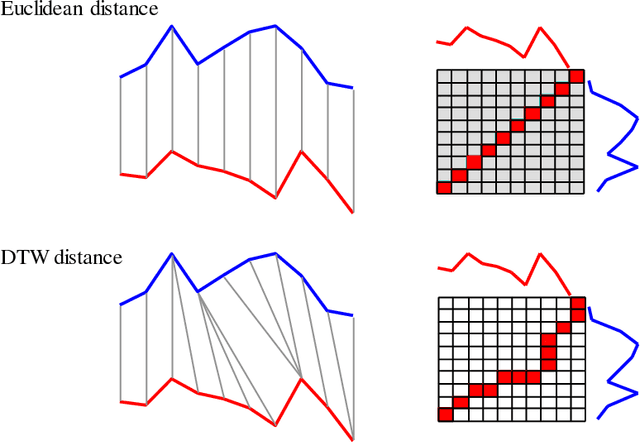
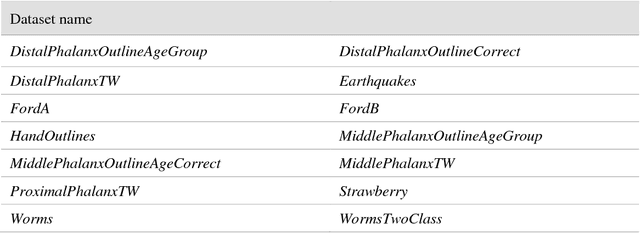
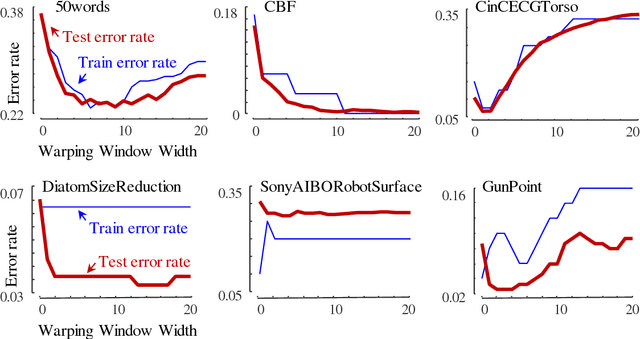

Abstract:The UCR Time Series Archive - introduced in 2002, has become an important resource in the time series data mining community, with at least one thousand published papers making use of at least one dataset from the archive. The original incarnation of the archive had sixteen datasets but since that time, it has gone through periodic expansions. The last expansion took place in the summer of 2015 when the archive grew from 45 datasets to 85 datasets. This paper introduces and will focus on the new data expansion from 85 to 128 datasets. Beyond expanding this valuable resource, this paper offers pragmatic advice to anyone who may wish to evaluate a new algorithm on the archive. Finally, this paper makes a novel and yet actionable claim: of the hundreds of papers that show an improvement over the standard baseline (1-Nearest Neighbor classification), a large fraction may be misattributing the reasons for their improvement. Moreover, they may have been able to achieve the same improvement with a much simpler modification, requiring just a single line of code.
 Add to Chrome
Add to Chrome Add to Firefox
Add to Firefox Add to Edge
Add to Edge